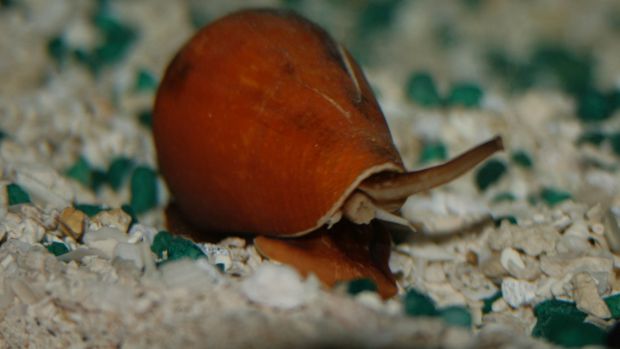
The venom of cone snails is being studies for potential medical uses. Photo: Frank Amri
Queensland researchers hope two humble organisms could unlock some serious healing power for humans.
University of Queensland researchers discovered venom found in cone snails could help detect and treat some cancer and addictions, while a type of roundworm could help heal severed nerves.
Richard Clark from UQ’s School of Biomedical Sciences said the cone snail venom could immobilise prey such as worms, other snails and fish.
“This venom contains hundreds of different toxins that are highly potent and target specific receptors in their prey,” Dr Clark said.
“The power and selectivity of these toxins make them both valuable drug leads and excellent molecular tools for understanding the human body’s processes.”
Dr Clark said some of those toxins targeted the nicotinic acetylcholine receptor family, which had been implicated in a range of diseases such as Alzheimer’s, schizophrenia, tobacco addiction and lung cancer.
“Our study focused on a specific toxin and we investigated its structure and how it worked to see if we could engineer a molecule that would only target the receptor associated with cancers and addictions,” he said.
“We were able to do this and it can now be used as a tool for studying these diseases.
“It might also be a potential drug lead once more is known about the role of the receptor in these conditions.”
Across campus, at UQ’s Queensland Brain Institute, the roundworm study’s project leader Massimo Hilliard said his team’s findings gave hope to people who suffered nerve injuries.
They looked at the ability of roundworms, particularly the non-parasitic Caenorhabditis elegans, to fuse together severed nerves.
“This will now open new avenues to try to exploit this knowledge in other systems closer to human physiology, and hopefully move further towards solving nerve injuries,” Dr Hilliard said.
“We’ll now try to understand if a similar process occurs in vertebrates and, if it doesn’t, how we can use what we have learned from worms to make it happen and then scale it up towards humans.”
The cone snail study was published in the Journal of Biological Chemistry, while the roundworm study was published in the journal Nature.
